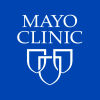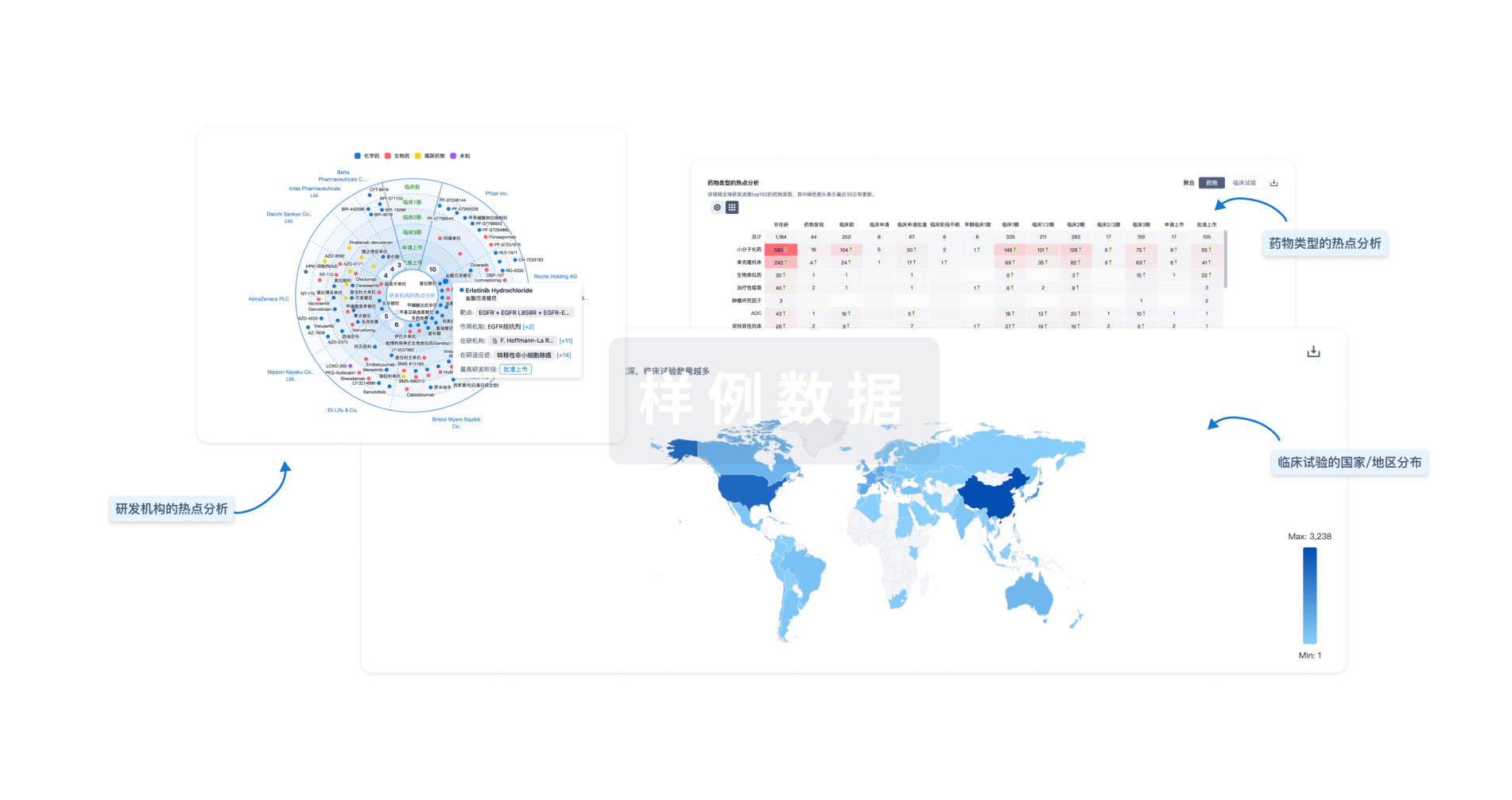预约演示
更新于:2025-05-07
Recurrent Anaplastic Large Cell Lymphoma
复发性间变性大细胞淋巴瘤
更新于:2025-05-07
基本信息
别名 Recurrent Anaplastic Large Cell Lymphoma、Relapsed Anaplastic Large Cell Lymphoma |
简介 The reemergence of anaplastic large cell lymphoma after a period of remission. |
关联
31
项与 复发性间变性大细胞淋巴瘤 相关的药物作用机制 ALK抑制剂 [+2] |
原研机构 |
在研适应症 |
最高研发阶段批准上市 |
首次获批国家/地区 中国 |
首次获批日期2024-04-24 |
靶点 |
作用机制 HDAC抑制剂 |
最高研发阶段批准上市 |
首次获批国家/地区 美国 |
首次获批日期2015-02-23 |
66
项与 复发性间变性大细胞淋巴瘤 相关的临床试验NCT06508463
Phase I Trial of Systemic Administration of Vesicular Stomatitis Virus Genetically Engineered to Express NIS and Human Interferon, in Patients With Relapsed or Refractory Multiple Myeloma, Acute Myeloid Leukemia, Lymphomas, or Histiocytic/Dendritic Cell Neoplasms
This phase I trial studies the best dose and side effects of recombinant vesicular stomatitis virus (VSV) carrying the human (h) sodium iodide symporter (NIS) and Interferon (IFN) beta (β) genes (VSV-hIFNβ-NIS) in combination with ipilimumab and cemiplimab in patients with T-cell lymphoma. A virus, called VSV-hIFNβ-NIS, which has been changed in a certain way, may be able to kill cancer cells without damaging normal cells. Immunotherapy with ipilmumab and cemiplimab may induce changes in body's immune system and may interfere with the ability of tumor cells to grow and spread.
开始日期2024-01-05 |
申办/合作机构  Mayo Clinic Mayo Clinic [+1] |
NCT05702502
Liquid Biopsy for the Identification of Malignancy Associated Haemophagocytic Lymphohistiocytosis (HLH)
Haemophagocytic lymphohistiocytosis (HLH) is a rare life-threatening blood disease which causes severe inflammation with symptoms similar to severe sepsis. It is hard to diagnose. The most common cause of HLH in adults is lymphoma (blood cancer). Outcomes for adults with HLH and cancer are serious, and most die after days or weeks because they have been diagnosed or treated too late. It is likely that many cases where patients died of HLH with no underlying cause actually had cancer.
Recently it has been found that patients with certain types of lymphoma have DNA which comes directly from their cancer (circulating tumour DNA; ctDNA). Aggressive lymphomas release a lot of ctDNA which can be detected in the blood of patients. This study will look for ctDNA in patients with HLH, and see if it is possible to use it to diagnose lymphoma earlier. Patients will provide a small additional blood sample for analysis. Diagnosing lymphoma more rapidly would mean more people could get the correct treatment for the lymphoma which has caused their HLH. They could receive the correct treatment sooner. Earlier diagnosis and treatment could improve survival for these patients.
Recently it has been found that patients with certain types of lymphoma have DNA which comes directly from their cancer (circulating tumour DNA; ctDNA). Aggressive lymphomas release a lot of ctDNA which can be detected in the blood of patients. This study will look for ctDNA in patients with HLH, and see if it is possible to use it to diagnose lymphoma earlier. Patients will provide a small additional blood sample for analysis. Diagnosing lymphoma more rapidly would mean more people could get the correct treatment for the lymphoma which has caused their HLH. They could receive the correct treatment sooner. Earlier diagnosis and treatment could improve survival for these patients.
开始日期2023-06-30 |
NCT04774068
A Phase I Study of Romidepsin in Combination With Parsaclisib in Relapsed and Refractory T-Cell Lymphomas
This phase I trial finds the appropriate parsaclisib dose level in combination with romidepsin for the treatment of T-cell lymphomas that have come back (relapsed) or that have not responded to standard treatment (refractory). The other goals of this trial are to find the proportion of patients whose cancer is put into complete remission or significantly reduced by romidepsin and parsaclisib, and to measure the effectiveness of romidepsin and parsaclisib in terms of patient survival. Romidepsin blocks certain enzymes (histone deacetylases) and acts by stopping cancer cells from dividing. Parsaclisib is a PI3K inhibitor. The PI3K pathway promotes cancer cell proliferation, growth, and survival. Parsaclisib, thus, may stop the growth of cancer cells by blocking PI3K enzymes needed for cell growth. Giving romidepsin and parsaclisib in combination may work better in treating relapsed or refractory T-cell lymphomas compared to either drug alone.
开始日期2021-09-01 |
100 项与 复发性间变性大细胞淋巴瘤 相关的临床结果
登录后查看更多信息
100 项与 复发性间变性大细胞淋巴瘤 相关的转化医学
登录后查看更多信息
0 项与 复发性间变性大细胞淋巴瘤 相关的专利(医药)
登录后查看更多信息
272
项与 复发性间变性大细胞淋巴瘤 相关的文献(医药)2025-03-25·Blood Advances
Pediatric relapsed/refractory ALK-positive anaplastic large cell lymphoma treatment and outcomes in the targeted-drug era
Article
作者: Schultz, Liora M. ; Lin, Carol H. ; Ding, Hilda ; Belsky, Jennifer A. ; Ritter, Victor ; Rivers, Julie ; Greer, Chelsee ; Link, Michael P. ; Agrusa, Jennifer E. ; Marks, Lianna J. ; Gardner, Rebecca ; Smith, Christine Moore ; Satwani, Prakash ; Aftandilian, Catherine ; Devine, Kaitlin J. ; Weinstein, Joanna ; Phillips, Charles A. ; Lowe, Eric J. ; Kamdar, Kala Y. ; Ehrhardt, Matthew J. ; Hoogstra, David ; Reilly, Anne ; Afify, Zeinab ; Forlenza, Christopher J. ; Toner, Keri ; August, Keith
2025-02-11·Blood Advances
Global outcomes and prognosis for relapsed/refractory mature T-cell and NK-cell lymphomas: results from the PETAL consortium
Article
作者: Shen, Changyu ; Gentilini, Marianna ; McCabe, Sean M. ; Civallero, Monica ; Singh, Shambhavi ; Kariya, Khyati Maulik ; Casadei, Beatrice ; Lenart, Alexandra ; MacVicar, Caroline T. ; Al-Mansour, Mubarak ; Kim, Jin Seok ; Mohamed, Zainab ; Alturas, Jackielyn Cuenca ; Sorial, Mark ; Barnes, Jeffrey ; Shah, Devavrat ; Panchoo, Girisha ; Peng, Luke ; Shetty, Alok ; Sengar, Manju ; Boussi, Leora ; Gabler, Judith ; Marchi, Enrica ; Lymboussaki, Athina ; Manni, Martina ; Horwitz, Steven M. ; Kim, Won-Seog ; Cabrera, Maria Elena ; Jain, Hasmukh ; Eche-Ugwu, Ijeoma Julie ; Federico, Massimo ; Chiattone, Carlos ; Sawas, Ahmed ; Nwodo, Emmanuel ; Merrill, Mwanasha ; Stuver, Robert ; Chopra, Kusha ; Koh, Min Ji ; Cho, Jae Yong ; Bhanushali, Forum ; Iwasaki, Makoto ; Prince, Henry Miles ; Yoon, Sang Eun ; Garg, Aditya ; Sridhar, Epari ; Yoshida, Noriaki ; Jain, Salvia ; Van Der Weyden, Carrie ; O’Connor, Owen A. ; Zinzani, Pier Luigi ; Bhagat, Govind ; Han, Jessy Xinyi ; Miranda, Eliana ; Koh, Min Jung ; Disciullo, Alexander ; Eipe, Thomas ; Kim, Yuri ; Verburgh, Estelle ; Hamouche, Ramzi ; Foss, Francine ; Ford, Josie ; Ku, Amy ; Skrypets, Tetiana ; Shet, Tanuja ; Jacobsen, Eric ; Okatani, Takeshi ; Saha, Saswata ; Fernandez Turizo, Maria J. ; Murdashvili, Tinatin ; Ma, Helen
2025-01-01·Clinical Laboratory
A Case of Relapsed and Refractory Pediatric Anaplastic Large Cell Lymphoma with Complex Karyotype
Article
作者: Zhang, Wenyun ; Zheng, Danqin ; Zhu, Songjie ; Ruan, Huajuan
5
项与 复发性间变性大细胞淋巴瘤 相关的新闻(医药)2024-02-06
German drug developer MorphoSysintends to sell itself in a pair of deals that will hand most of its assets to Novartis and one of its marketed medicines to longtime partner Incyte.In the larger of the two deals, Novartis has agreed to acquire MorphoSys for 68 per share, about 2.7 billion, or $2.9 billion in total. The offer represents an 18% premium to MorphoSys 57.40 closing price Monday on the German stock exchange. While that figure is on the lower end of biopharmaceutical deal premiums, MorphoSys shares had surged Monday after a Reuters report revealed Novartis was closing in on an acquisition.Meanwhile, biotechnology company Incyte is paying $25 million for rights to the lymphoma drug tafasitamab that it doesnt already own. Incyte has been developing tafasitamab with MorphoSys since 2020. The drug is approved for a form of relapsed lymphoma and is in advanced testing for other blood malignancies. Following the deal, Incyte wont have to make future milestone payments to MorphoSys or split profits.For Novartis, the deal is something of a surprise. Reports over the last month had indicated the company was considering a much larger acquisition of heart drug developer Cytokinetics. But a buyout hasnt materialized and, on a conference call last week, CEO Vas Narasimhan emphasized the company is focused on bolt-on acquisitions in the sub $5 billion space.MorphoSys fits that description, but represents a gamble by Novartis on the future of a bone cancer drug called pelabresib. MorphoSys has been developing it for myelofibrosis, a condition that can cause severe anemia and related symptoms of weakness and fatigue. A combination of the drug and Incytes Jakafi succeeded in late-stage testing last year, improving markers of health important to myelofibrosis patients. In a statement, Novartis described its expectations the regimen could be practice changing.Still, pelabresib faces questions. The drug didnt significantly reduce symptom scores in testing, missing a key secondary study goal. Novartis pointed to favorable trends in symptom improvements and said a U.S. approval filing is expected later this year. Nonetheless, the results leave the drugs regulatory prospects uncertain and make the timing of Novartis buyout a potential risk, wrote Leerink Partners analyst Andrew Berens, in a research note.The Federal Trade Commission, which has been more aggressively scrutinizing pharmaceutical deals in recent years, could also challenge the deal given therapeutic overlaps and financial ties between MorphoSys and Novartis in myelofibrosis, he added.We do not foresee another bidder emerging at these levels given the risks, Berens wrote.The deal would add to Novartis hematology portfolio, which currently includes non-U.S. rights to Jakafi, as well as drugs for sickle cell disease, leukemia and other disorders. Novartis would also get a cancer therapy in early-stage testing and experimental drugs partnered with drugmakers like Eli Lilly and Ultragenyx.For Incyte, acquiring tafasitamab is probably not the deal investors were looking for, as it followed speculation the company lost a bidding war to Novartis, wrote William Blair analyst Matt Phipps. The company faces competition for Jakafi, its primary revenue driver, and has been trying in recent years to expand into areas like dermatology.Still, the deal is a cheap bet MorphoSys drug, which is currently approved for refractory diffuse large B cell lymphoma, can prove itself in other indications, he wrote. Key to those prospects are a pair of trials in follicular and marginal zone lymphoma that should produce results in 2024, as well as a study in newly diagnosed patients with DLBCL that will read out next year.Monjuvi generated $92 million in U.S. sales in 2023. MorphoSys is projecting $80 million to $95 million in sales this year. '
2023-08-07
·生物谷
来自意大利都灵大学等机构的科学家们通过研究有望帮助开发治疗间变性大细胞淋巴瘤的新型疗法。文章中,研究人员发起了一项计划来检测新型组合性疗法治疗复发性间变性大细胞淋巴瘤患者的效果,未来患者或有望避免进行
间变性大细胞淋巴瘤(anaplastic large cell lymphoma)是一种非霍奇金淋巴瘤,同时也是一种最常见的儿童侵袭性淋巴瘤,化疗和放疗并不能治疗大约30%的病例,当肿瘤由癌基因AKL所驱动时(大多数患儿都是如此),诸如克唑替尼(crizotinib)等激酶抑制剂药物就能有效阻断肿瘤生长,也并不会产生像化疗所带来的严重副作用。
然而,ALK抑制剂非常昂贵(每年患者需要花费大约8万美元),且必须终生服用,一旦停止患者的淋巴瘤就会复发,研究人员都知道,ALK抑制剂能控制淋巴瘤,但并不能治愈疾病,那么为何淋巴瘤细胞能存活这么久呢?近日,一篇发表在国际杂志Science Translational Medicine上题为“Targeting CCR7-PI3Kγ overcomes resistance to tyrosine kinase inhibitors in ALK-rearranged lymphom”的研究报告中,来自意大利都灵大学等机构的科学家们通过研究有望帮助开发治疗间变性大细胞淋巴瘤的新型疗法。文章中,研究人员发起了一项计划来检测新型组合性疗法治疗复发性间变性大细胞淋巴瘤患者的效果,未来患者或有望避免进行化疗以及其所带来的副作用。
研究者表示,持久性的淋巴瘤细胞倾向于在血液和淋巴管周围徘徊,当其靠近血管时就会受到保护,这或许是血管周围的微环境保护了这些细胞;于是研究人员开始了一系列实验,对于一些实验而言,他们在芯片上创建了血管三维微流体模型,并用内皮细胞作为内衬,随后加入了淋巴瘤细胞,结果发现,当淋巴瘤细胞滞留在血管中时,ALK抑制剂并不会杀死它们。
研究者进一步发现,内皮细胞能产生名为CCL19和CCL21的两种蛋白,其能促使淋巴瘤细胞得以生存,即使激酶抑制剂能阻止其生长和扩散;其存活信号很弱,只有血管附近的细胞才能接受足够的信号,但这足以让细胞存活,当在实验室试验中移除上述蛋白后,细胞就会经历细胞凋亡和死亡。Chiarle说道,ALK抑制剂能潜在帮助抵御淋巴瘤,但当暂停其作用时细胞就会立即开始复制并再次增殖。研究者认为,CCL19和CCL21信号能通过CCR7受体来激活PI3K,通过剔除编码受体的基因或抑制PI3K来阻断这一信号通路或许就能杀灭持续存在的淋巴瘤细胞。
图片来源:https://www.science.org/doi/10.1126/scitranslmed.abo3826
研究人员偶然间发现,一种PI3K抑制剂药物杜韦利西布(duvelisib)目前在临床上用于治疗白血病和其它形式的淋巴瘤,当研究人员将杜韦利西布与克唑替尼结合并将药物给予携带人类间变性大细胞淋巴瘤的小鼠进行治疗时,很多小鼠都被治愈了。其他人最终会再次患上淋巴瘤,但时间或许要晚得多,通过优化这种药物组合,研究人员希望能增加患者的治愈率。目前研究人员针对间变性大细胞淋巴瘤儿童和成年人的1期临床试验正在计划阶段,其或许会通过白血病&淋巴瘤协会多中心资助的网络来运行。
研究人员希望这项研究和其它研究工作最终能促进患者在不使用化疗的情况下进行治疗,并避免毒性和继发性癌症发生的风险。Chiarle表示,ALK抑制剂作为一线疗法在治疗其它癌症上的效果很好,我们认为将其与杜韦利西布结合后就能为很大一部分间变性大细胞淋巴瘤患者提供免于化疗的治疗手段,这一点对于能存活几十年的儿童而言非常重要。
综上,本文研究结果表明,阻断PI3Kγ或CCR7信号并联合ALK TKI疗法或能降低间变性大细胞淋巴瘤患者中持久性淋巴瘤细胞的原发性耐药性和存活。(生物谷Bioon.com)
原始出处:
CRISTINA MASTINI,MARCO CAMPISI,ENRICO PATRUCCO, et al. Targeting CCR7-PI3Kγ overcomes resistance to tyrosine kinase inhibitors in ALK-rearranged lymphoma, Science Translational Medicine (2023). DOI: 10.1126/scitranslmed.abo3826
2022-06-25
欢迎关注凯莱英药闻抗体偶联药物(ADC)是由抗原特异性靶向作用的单克隆抗体和高活性细胞毒类化学药物偶联而成, 是一种很有潜力的新型肿瘤治疗靶向药物。这类修饰抗体能够通过抗体部分特异性结合癌细胞表位的抗原而选择性地将高活性细胞毒药物运送到肿瘤细胞内, 这将使癌症患者治疗疗效最大化, 药物全身毒副作用最小化。截至目前,全球一共有14款ADC药物获批上市(去除ADC生物类似药),涉及靶点11个,适应症涵盖实体瘤和血液瘤。 012021年ADC药品全球销售额 Top 10从下图可以看到,2021年有销售数据的ADC药品整体市场规模达到55.2亿美元。其中罗氏trastuzumab emtansine(Kadcyla®)销售额为23.91亿美元,位居榜首。Seagen和武田研发的brentuximab vedotin(Adcetris®)销售额为12.8亿美元,位于第二位。Top 10中,trastuzumab emtansine销售额比3至10位的总和(18.5亿美元)还要高出5.4亿美元。 022026年ADC药品全球销售额Top 10从下图可以看到,前述ADC药品预计到2026年市场规模近150亿美元,5年复合增速达到22.1%。2026年Seagen和安斯泰来合作的enfortumab vedotin(Padcev®)销售额为30.99亿美元,跃升至第一位,5年的复合增速为46.2%。而罗氏trastuzumab emtansine(Kadcyla®)销售额则微降到23.04亿美元,5年复合增速为-0.7%。tisotumab
vedotin(Tivdak®)5年复合增速最高,可达187.6%,销售额近12亿美元,从2021年第十位升至2026年第六位。 03重磅ADC药品点评(1)trastuzumab emtansine(Kadcyla®,T-DM1):首款治疗乳腺癌的ADC,目前史上销售额最大Kadcyla是一款HER2ADC药物,于2013年获FDA批准上市,先后获批HER2阳性转移性乳腺癌和接受新辅助治疗后残存病灶的HER2阳性早期乳腺癌的辅助治疗。2020年1月,T-DM1获NMPA批准上市,适应症为接受紫杉烷类联合曲妥珠单抗为基础的新辅助治疗后,仍残存侵袭性病灶的、HER2阳性早期乳腺癌患者的辅助治疗。结构设计上,T-DM1采用曲妥珠单抗,细胞毒药物采用了微管蛋白抑制剂DM1,连接子采用MCC Linker。T-DM1作为早期的ADC药物,其结构设计存在不足,在payload的选择上,DM1毒性有限,不及同为微管蛋白抑制剂的MMAE和MMAF,纵观上市的ADC药物,仅T-DM1采取了DM1作为Payload;此外,由于采用不可裂解的linker,尽管稳定性提升,但不具有旁观者效应。DM1的DAR为3.5。就T-DM1的代谢特征而言,它的半衰期为4天,清除率为0.68 L/天。(2)brentuximab vedotin(Adcetris®):血液瘤领域史上最成功的ADC在Mylotarg撤市后的一年,也就是2011年,第二代抗体偶联药物Brentuximab vedotin(Adcetris)获得FDA的批准,用于治疗霍奇金淋巴瘤和复发性间变性大细胞淋巴瘤。从某种意义上讲,Adcetris才是真正的首个获批上市的抗体偶联药物。2020年5月获NMPA批准用于治疗成人CD30阳性复发/难治性系统性间变性大细胞淋巴瘤(R/R sALCL)和复发或难治性经典型霍奇金淋巴瘤(R/R cHL),成为我国市场第二个获批的ADC药品。结构设计上,Adcetris是由靶向CD30的单抗cAC10(SGN-30)与阻止微管蛋白聚合进而抑制有丝分裂的Monomethyl auristatin
E(MMAE),通过一个可被蛋白酶切割的接头连接而成。CD30抗原蛋白是霍奇金淋巴瘤(Hodgkin lymphoma, HL) 癌细胞过度表达的靶点, Adcetris 通过其抗体部分特异性靶向CD30靶点, 将微管蛋白抑制剂MMAE高效输送到癌细胞内部, 在癌细胞内微管蛋白抑制剂MMAE可通过抑制微管蛋白的聚合阻碍癌细胞分裂增生, 杀死癌细胞。(3) trastuzumab deruxtecan(Enhertu®,T-DXd):全球最具潜力ADCEnhertu是一种靶向HER-2阳性表达细胞的ADC药物,通过一种4肽连接子将靶向HER2的人源化单克隆抗体trastuzumab(曲妥珠单抗)与一种新型拓扑异构酶1抑制剂exatecan衍生物(DX-8951衍生物,DXd)链接在一起,阻断DNA复制过程,造成细胞死亡。同时也已证实DXd在拓扑异构酶I中抑制活性高于SN-38和DX-8951f。Enhertu的DAR接近8,是目前已上市获批其他ADC的2~4倍,有助于向靶细胞输送更多的药物。2019年12月,美国FDA加速批准Enhertu上市,治疗接受过2种或以上抗HER2疗法的治疗的无法切除或转移性HER2阳性乳腺癌患者。基于DESTINY-Gastric01试验的结果,T-DXd(6.4mg/kg)在多个国家被批准用于治疗接受过以曲妥珠单抗为基础治疗后进展的HER2阳性局部晚期或转移性胃癌或胃食管交界处腺癌成人患者。2022年3月Enhertu在国内的上市申请获得CDE受理,并于4月24日拟被纳入优先审评公示中。申请上市的适应症为:单药适用于治疗既往接受过一种或一种以上抗HER2药物治疗的不可切除或转移性HER2阳性成人乳腺癌患者。2022年ASCO年会上,Enhertu(trastuzumab deruxtecan)治疗HER2低表达的不可切除或转移性乳腺癌患者的3期临床试验结果正式公布。DESTINY-Breast04 试验的主要终点分析结果显示:与化疗方案相比,T-DXd将HR 阳性、HER2低表达转移性乳腺癌患者的疾病进展或死亡风险降低了 49%(PFS 风险比 [HR]
0.51;95% 置信区间 [CI]:0.40-0.64;p<0.001)。根据盲法独立中央审查(BICR)评估,T-DXd 治疗组患者的中位 PFS 为10.1个月,而化疗组患者为5.4个月。T-DXd在HER2低表达的转移性乳腺癌患者中显示出具有临床意义的生存获益,这是第一个根据HER2低表达选择患者进行治疗的试验,将有可能改变这些患者的诊疗模式。(4)enfortumab vedotin(Padcev®):全球首款治疗尿路上皮癌的ADC药物Padcev通过蛋白酶可切割的连接子-马来酰亚胺己酰基-缬氨酸-瓜氨酸 (MC-Val-Cit) 连接在抗体的半胱氨酸残基上,有效载荷为MMAE。其靶向细胞表面蛋白Nectin-4。它的DAR为3.8。2019 年12月获得FDA批准用于治疗局部晚期或转移性尿路上皮癌。2022年4月EC批准其作为单一疗法,用于治疗既往接受过含铂化疗和 PD-1/L1抑制剂的局部晚期或转移性尿路上皮癌成人患者。(5)tisotumab vedotin(Tivdak®):全球首款治疗宫颈癌的ADC药物Tivdak是利用Seagen的ADC技术在Genmab的TF人源单克隆抗体基础上联合开发而成,该技术利用一个蛋白酶可裂解的linker将微管破坏剂monomethyl auristatin E(MMAE)共价连接到抗体上。非临床数据表明,Tivdak的抗癌机制是ADC与表达TF的癌细胞结合,随后ADC-TF复合物内化,并通过蛋白水解释放 MMAE。MMAE破坏分裂活跃的癌细胞的微管网络,导致细胞周期停滞和细胞凋亡。2021年9月20日,FDA批准Seagen和Genmab联合开发的Tivdak上市,用于治疗在化疗期间或化疗后病情进展的复发性或转移性宫颈癌成人患者。 04小结抗体偶联药物作为一类新型药物, 通过已建立的药物技术平台可以采用针对不同抗原靶点的抗体、不同的连接子和不同作用机制的小分子毒素药物进行组合, 开发出针对不同靶点和适应症的创新药物。虽然已有多款抗体偶联药物上市或在Ⅲ期临床研究中, 但目前抗体偶联药物也存在一些问题或缺点需要不断克服和突破。① 新靶点选择: 抗体偶联药物的成功开发依赖于选择合适的抗原靶点, 使该类药物的抗体部分可以与之特异性高活性结合, 新靶点抗原应在肿瘤中的表达水平较高, 在正常组织中的表达很少或不表达, 或仅在特定组织类型中有表达, 以提高药物的安全性和有效性。② 目前抗体偶联药物对实体瘤靶向输送作用相对较弱, 可能与肿瘤细胞表面抗原表达多样性、肿瘤血流供应不正常、肿瘤部位渗透压高有关。新型工程小型化抗体对肿瘤的穿透性较高, 利用小型化抗体构建的抗体偶联药物也许能够解决肿瘤靶向穿透不足的问题。另一方面用于抗体偶联药物开发的理想抗体应该是人源化或全人源单抗体, 使其能够高效结合肿瘤细胞而与正常细胞没有交叉反应, 以降低药物免疫原性。③ 目前已上市或处于临床研究阶段的抗体偶联药物大多数使用的毒素为微管蛋白抑制剂美登素类(maytansinoids) 和甲基澳瑞他汀类(auristatins)。该类小分子毒素一方面为非水溶性药物, 另一方面药物毒性较大, 有可能造成神经麻痹等不良反应, 开发新型亲水性的小分子药物, 可以提高药物的吸收利用率, 同时也可以规避专利等问题。 ④ 连接子及偶联技术需要进一步优化改进, 非水性连接子有可能改变抗体电荷分布而导致其聚集产生聚体, 稳定亲水性连接子和定点偶联技术可以提高药物血浆稳定性和肿瘤部位细胞毒素的可控释放, 也可以提高药物的纯度和组分均一性, 最大程度减少药物非靶向和全身性毒性, 进一步提高药物的安全性和药物疗效。感谢关注、转发,转载授权、加行业交流群,请加管理员微信号“hxsjjf1618"。参考资料:[1] Wolska-Washer A, Robak T.
Safety and tolerability of antibody-drug conjugates in cancer [J]. Drug Saf,
2019, 42: 295-314[2] Moldenhauer G, Salnikov AV,
Luttgau S, et al. Therapeutic potential of amanitin-conjugated anti-epithelial
cell adhesion molecule monoclonal antibody against pancreatic carcinoma [J]. J
Natl Cancer Inst, 2012, 104: 622-634.[3]Challita-Eid P, Satpayev D,
Yang P, et al. Enfortumab vedotin antibody-drug conjugate targeting nectin-4 is
a highly potent therapeutic agent in multiple preclinical cancer models. Cancer
Res. 2016;76(10):3003-3013.[4] CHEN Hu, ZHANG Xinling, KONG Nana, LUO
Wenting, LI Lele, LIU Lina, HUANG Changjiang, JIANG Jing. Clinical Research
Progress and Challenges of Antibody-drug Conjugates Based on Site-specific Conjugation
Techniques[5]公司官网
抗体药物偶联物抗体免疫疗法小分子药物合作
分析
对领域进行一次全面的分析。
登录
或

生物医药百科问答
全新生物医药AI Agent 覆盖科研全链路,让突破性发现快人一步
立即开始免费试用!
智慧芽新药情报库是智慧芽专为生命科学人士构建的基于AI的创新药情报平台,助您全方位提升您的研发与决策效率。
立即开始数据试用!
智慧芽新药库数据也通过智慧芽数据服务平台,以API或者数据包形式对外开放,助您更加充分利用智慧芽新药情报信息。
生物序列数据库
生物药研发创新
免费使用
化学结构数据库
小分子化药研发创新
免费使用




